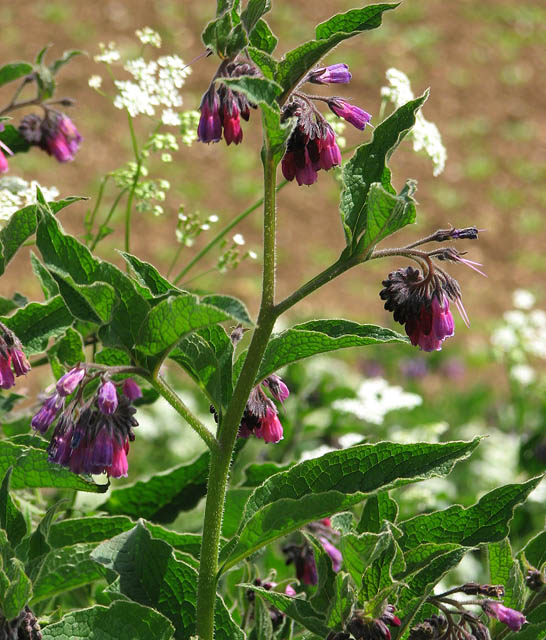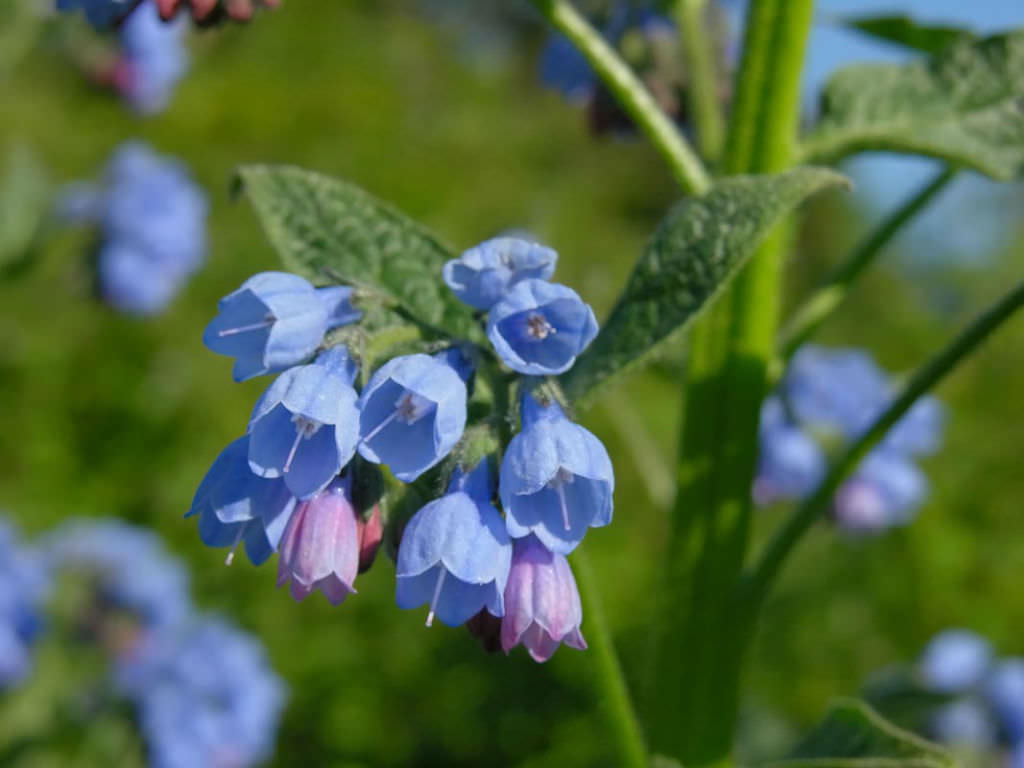


Propagate by root cuttings in early winter. Propagate by division of fleshy roots in spring.Cutting back stems promptly after flowering may encourage a possible rebloom and neat, young foliage. Symphytum officinale, commonly called comfrey, is a large, coarse, tuberous-rooted, clumping perennial (to 3’ tall and 2.5’ wide) that is primarily grown today as an ornamental for its attractive foliage and spring flowers.Easy to grow, disease and pest-free, clay soil tolerant.Planting in containers may help limit its spread. It makes a good ground cover but can become invasive, so site with care. Symphytum officinale is a PERENNIAL growing to 1.2 m (4ft) by 0.6 m (2ft in) at a fast rate. Excellent choice for woodland gardens, cottage gardens, or wildflower gardens where it can form attractive colonies over time.Appreciates some afternoon shade in hot summer climates.
#Symphytum comfrey full#
Thrives in full sun or part shade in moderately fertile, moist, well-drained soils.Once established, Comfrey can be very difficult to dig out. The major barrier to testing this plants therapeutic effects is the naturally occurring pyrrolizidine alkaloids (PAs) in comfrey. Comfrey also stimulates granulation and tissue regeneration, and supports callus formation ( Kommission E, 1990a, 1990b ). These applications have not been tested in clinical trials although there is research supporting anti-inflammatory 3-8, analgesic 9-10, would healing 9,11, and immune modulating effects 15-17. Because it spreads rapidly, give it some space. The therapeutic properties of comfrey are based on its antiinflammatory and analgesic effects. A most suitable plant for moist areas in dappled shade. Forming extensive colonies, Caucasian Comfrey is an excellent subject for the wildflower garden but is equally useful in the border or as a short specimen plant in the garden. From late spring to early summer, nodding, tubular bell-shaped flowers held in drooping clusters, open pink, then turn azure blue. Symphytum caucasicum (Caucasian Comfrey) is a rhizomatous perennial boasting arching stems clothed with large, softly hairy, gray-green, lance-shaped leaves, 8 in.


 0 kommentar(er)
0 kommentar(er)
